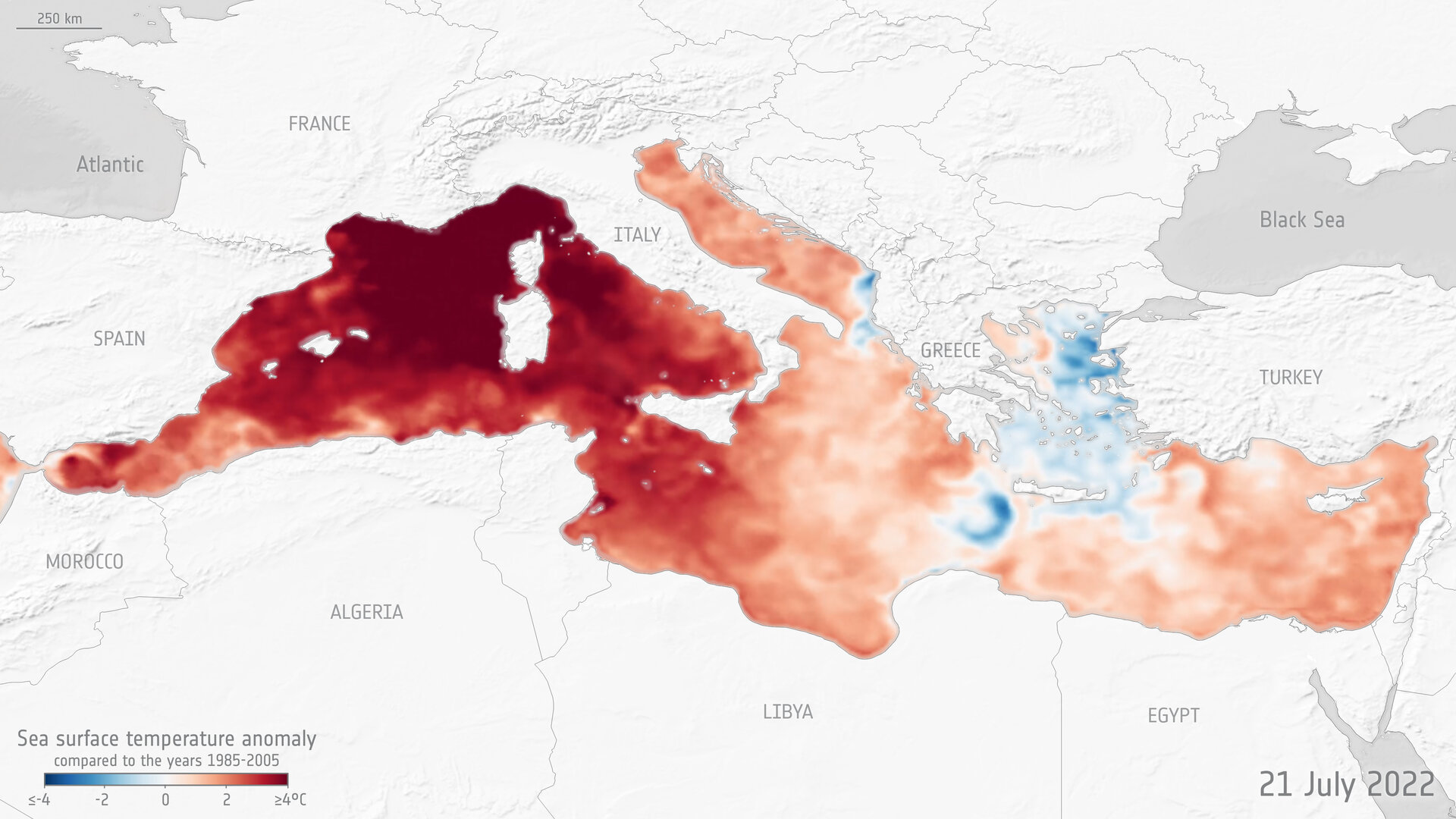The Mediterranean sea is warming almost twice as fast as the global ocean and has already warmed 1.3 °C compared to the early 1980s. Its summer heat spikes are now strong enough to wipe out entire beds of seagrass, coral and farmed fish.
The Mediterranean Sea has experienced a notable rise in the occurrence and intensity of extreme warm temperature events, referred to as marine heatwaves (MHWs).
What is a marine heatwave?
A marine heatwave by oceanography definition is when the sea surface temperature “SST” is higher than 90th percentile for 5 consecutive days.
Sea surface temperature is simply the temperature of a very thin layer of ocean water that touches the air.
The new early breaking through
On May 7, 2025 a greek researchers team from Foundation for Research & Technology–Hellas published a study in Ocean Science Journal, on their first built deep-learning model that can spot Mediterranean marine heat‑wave (MHW) up to seven days before it strikes.
The study feeds 35 years, between 1982 and 2017, of daily sea temperature anomaly maps into an Attention U-Net Convolutional neural network, and able to predict near MHW occurrence within 3 to 7 days.
The Attention U-Net Convolutional Network learns each heat-wave’s fingerprint and build up a color coded map showing where temperatures will the Hobday MHW threshold (90th‑percentile SST for ≥ 5 days).
Global warming leading to MHWs
By definition in NASA, global warming is the long-term heating of Earth’s surface observed since the pre-industrial period (between 1850 and 1900) due to human activities, primarily fossil fuel burning, which increases heat-trapping greenhouse gas levels in Earth’s atmosphere.
Water has far higher heat capacity than air, it absorbs 90% of the heat and specifically the sea surface level of water (upper layer).
Why the Mediterranean warms faster than other seas
The Mediterranean feels this planetary fever more acutely than most basins because of its geography and regional feedback loops.
It is a semi-enclosed “mini-ocean” connected to the Atlantic by the narrow Strait of Gibraltar, so warm anomalies that enter through the strait linger far longer than they would in the open Atlantic.
The basin also sits beneath a belt of persistent subtropical high pressure that blocks cloud cover in summer, letting extra solar energy stream into the water column
The Mediterranean experiencing marine heatwaves means also blocking oxygen’s path to deeper sea level which on the long run makes the deep sea warmer welcoming warm-water invaders such as rabbitfish and lionfish; which they load the atmosphere with moisture that can turbo-charge Medicanes and extreme rainfall events.
Environmental fallout of higher SST
Climate: When the SST is warm it increases the evaporation which helps fuel storms, and shows on the long run how much the ocean is absorbing heat due to global warming.
Marine life: Repeated heat pulses have killed large swaths of Posidonia seagrass, red gorgonian corals and the giant pen shell Pinna nobilis, stripping habitat and natural carbon sinks, and that’s because most corals, fish larvae and seagrass live in the sun-lit surface layer, so even a 1 °C spike can stress or kill them.
Why the new model matters
By giving scientists and managers 3 to 7 days notice, the tool can help fish-farm operators lower cages, allow park rangers to close vulnerable dive sites, and trigger early warnings for coastal communities.
What’s next?
A public demonstrator tied to live Copernicus SST feeds is due later in 2025, and the team says they’ll open‑source the trained weights so anyone from Barcelona to Beirut can spin up local versions. If Lebanese agencies plug that alert layer into SMS or app push‑notifications, fishermen and park rangers could finally act before the water turns deadly.


